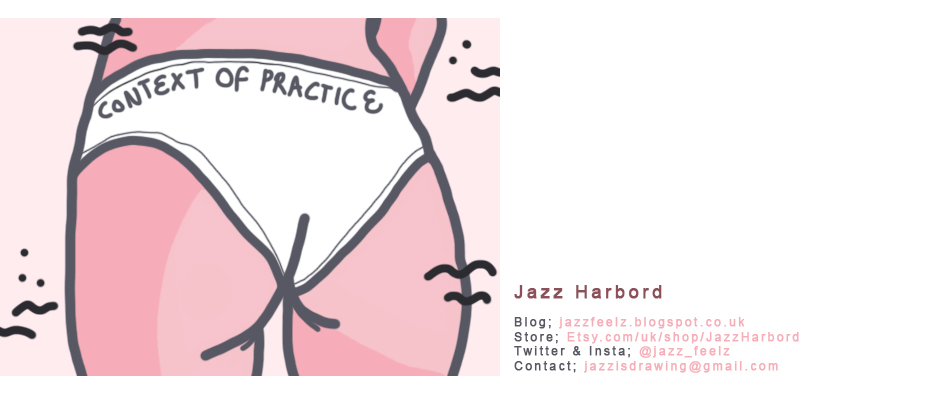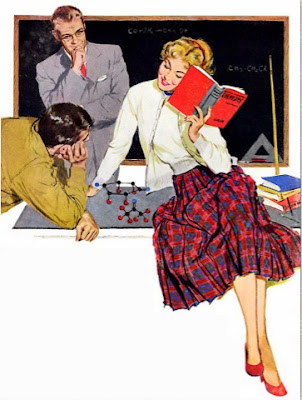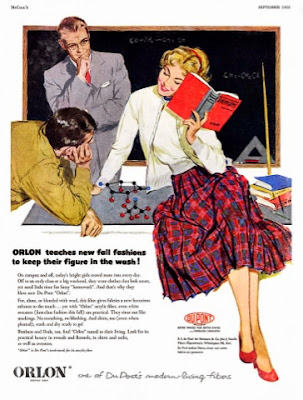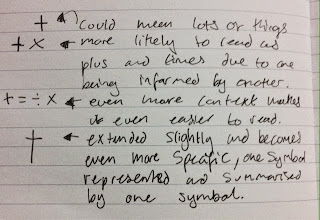- Hughes, R, Lifestyle Illustration of the 50s, United Kingdom: Innovative Logistics Llc.
-"The fifties was an era if forward-looking optimism, and the hopes and desires of these transitional years were elegantly captured in the stunning commercial artwork of the period." (Front sleeve)
-"The thriving women's magazine industry employed many of the most influential artists and illustrators of the day, but the ephemeral nature of the format meant that many of the artists work was predominately seen one day and forgotten the next." (Front sleeve)
-"consumer dream" (Front sleeve)
- Anon, 1950’s Illustration: When Mass Media Met Pop Culture. Available at: http://www.fuelyourillustration.com/1950s-illustration-when-mass-media-met-pop-culture/ [Accessed October 30, 2014]
-"Welcome to the wonderful world of the 1950’s illustration. It is filled with illusion, abundance, naiveness and optimism. In no other time in history has illustration been so incorporated into the society – representing and defining it’s ways and norms – as it was in the 1950’s."
-"Following the end of WWII western economies bloomed, and consumerism began to spread. During the 50’s the average salary in the USA went up by 50%, a middle class arouse, credit card was introduced, babies were booming all around, a good future was there for everyone."
- Notes on ‘The Gaze’ (no date). Notes on The Gaze. Available at: http://www.aber.ac.uk/media/Documents/gaze/gaze02.html (Accessed: 3 December 2014
- The Gender Ads Project (no date). The Gender Ads Project. Available at: http://genderads.com/ (Accessed: 3 December 2014).
- Catalano, Christina (2002). Shaping the American Woman: Feminism and Advertising in the 1950s, Constructing the Past: Vol. 3: Iss. 1, Article 6. Available at: http://digitalcommons.iwu.edu/constructing/vol3/iss1/6 (Accessed: 3 December 2014)
- The 10 Most Sexist Ads of 2013 (no date). The 10 Most Sexist Ads of 2013. Available at: http://www.adweek.com/adfreak/10-most-sexist-ads-2013-154550#intro (Accessed: 3 December 2014).
- A black eye and an iron..seriously? (no date). Gibson. Available at: http://vickiandcharlie.tumblr.com/ (Accessed: 4 December 2014).






.jpeg)